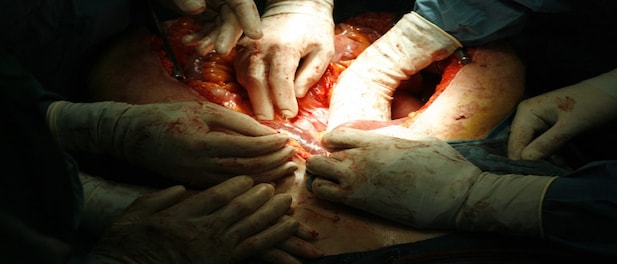The number of people who need a liver transplant is much higher than the number of livers donated. In India where about 1700-2000 liver transplants are done currently, it is estimated that about 29-35,000 transplants are required. This is despite the fact that a transplant is often recommended only as a last resort, because it is expensive, technically difficult, involving significant risks and require a long recovery period, writes Dr Tom Cherian, an eminent liver specialist and a transplant surgeon.
The liver is the largest organ in your body. In good health, your liver helps fight infections and cleans your blood. It also helps digest food and stores a form of sugar your body uses for energy. Given its important role in the day-to-day working of our body, normal life is not possible once its function is impaired and survival itself is very limited when it's non-functional.
A liver transplant is an operation to remove a diseased or damaged liver from the body and replace it with a healthy one. The transplantation has about a 90 percent one-year survival rate and thousands of people are benefiting from this remarkable surgery worldwide every year. But because liver transplants are expensive, technically difficult, have significant risks, and require a long recovery period, it is often recommended only as a last resort.
It is recommended when the liver has been damaged to the point that it cannot recover nor perform its normal functions (cirrhosis). Late stages of cirrhosis produce symptoms and are likely to fail completely soon. This is known as end-stage liver disease. It is at this point that an expensive major operation with the requirement for lifelong immunosuppression suddenly becomes a good idea because long-term survival is unlikely with continued medical (non-surgical) therapy.
Also Read: India makes important changes in organ donation and transplant rules | Here's all you need to know
The only hope for the long-term survival of a person with liver failure is a liver transplant. It is for this reason that approximately 1000 liver transplants are done every year in the UK via the govt. the healthcare system, and 5000 in the US. Although fairly common, a liver transplant is a major operation. One of the biggest risks is that the body will reject the new organ. To prevent this from happening, you will have to take medication to suppress the immune system for the rest of your life.
The number of people who need a liver transplant is much higher than the number of livers donated. In India where about 1700-2000 liver transplants are done currently, it is estimated that about 29-35,000 transplants are required. The only way we are able to service more of the people who are on the waiting list is to utilize a technique called living donor liver transplant where a section of the liver is removed from a living donor – because the liver can regenerate itself, both the transplanted section and the remaining section of the donor's liver are able to regrow into a normal-sized liver.
The reason for the liver getting damaged in the first place is variable. The liver can become damaged as a result of illness, infection, or toxins like alcohol. So, people with these conditions when and if they reach the above-mentioned stage called end-stage liver disease, will require a liver transplant. Hepatitis can result from a viral infection of the liver cells and ultimately lead to liver destruction or scarring. There are many different types of viral hepatitis - A, B, C, D, and E - that specifically infect the liver. Autoimmune Hepatitis is a condition where the body's immune system is unable to "recognize" its own liver tissue and begins to cause liver cell injury that leads to inflammation and scarring.
Also Read: Make organ donation mandatory after death; by living minors only under exceptional cases: Doctors
Nonalcoholic Fatty Liver Disease (NAFLD) is a recently recognized condition where fat accumulates in the livers of patients who do not drink alcohol. This is more common, but not restricted to, patients with diabetes and obesity and therefore very common in India. Sometimes people can develop cirrhosis or scarring that destroys the liver for no apparent reason, without ever having hepatitis or a history of substance abuse. This condition is called cryptogenic cirrhosis, which accounts for about 20% of transplants worldwide. In children, the most common reason for needing a liver transplant is biliary atresia. In biliary atresia, bile ducts are missing, damaged, or blocked.
In order to understand the correct timing of transplantation, you need the advice of specialists but some signs and symptoms of liver disease that suggest end-stage liver disease are long-standing yellowing of the skin and the whites of the eyes, a condition called jaundice; feeling tired or weak; losing your appetite; losing weight; losing muscle; itching; bruising or bleeding easily; throwing up blood; passing black stools; having a swollen abdomen; becoming forgetful or confused.
— The author, Prof. Dr. Tom Cherian, is a Liver Specialist and Transplant surgeon at Wockhardt Hospitals, Mumbai, and Founder, South Asian Liver Institute, Hyderabad.
(Edited by : C H Unnikrishnan)
First Published: Apr 19, 2023 5:38 PM IST
Check out our in-depth Market Coverage, Business News & get real-time Stock Market Updates on CNBC-TV18. Also, Watch our channels CNBC-TV18, CNBC Awaaz and CNBC Bajar Live on-the-go!







